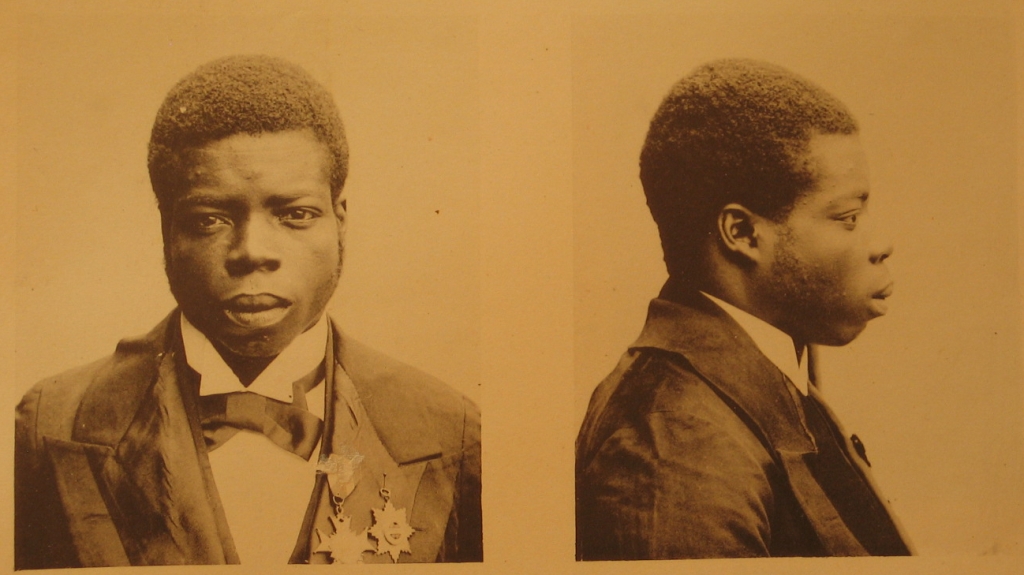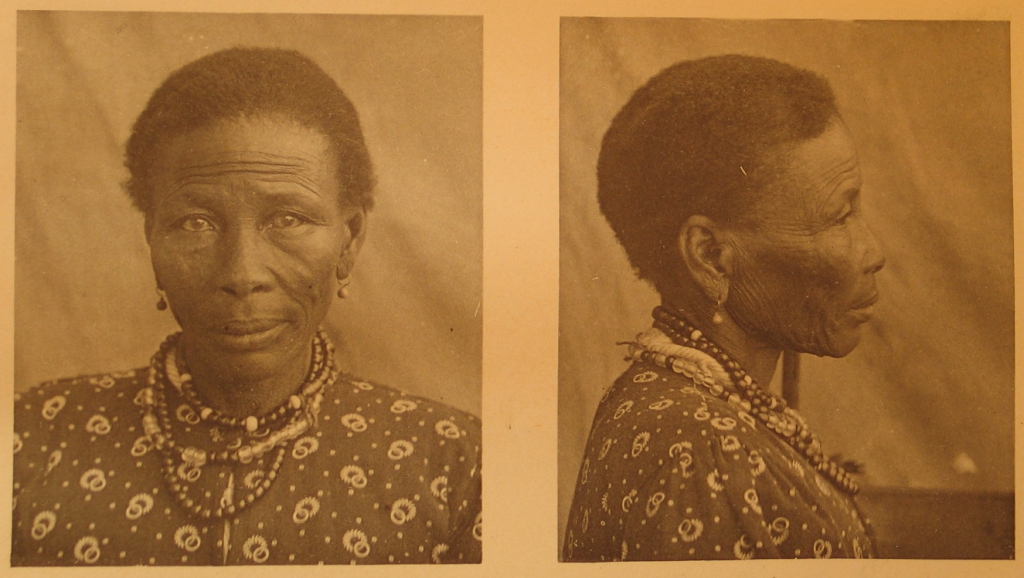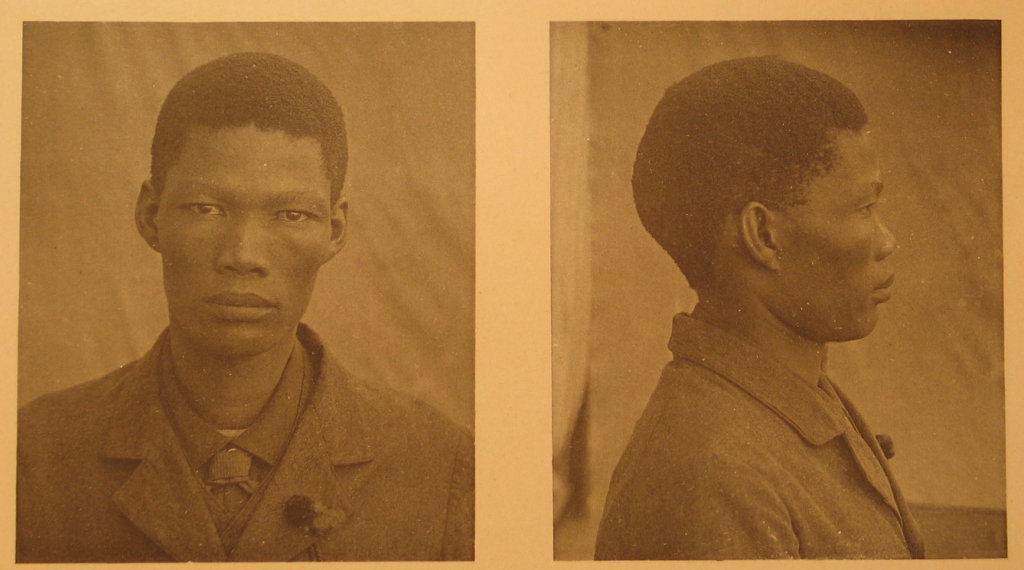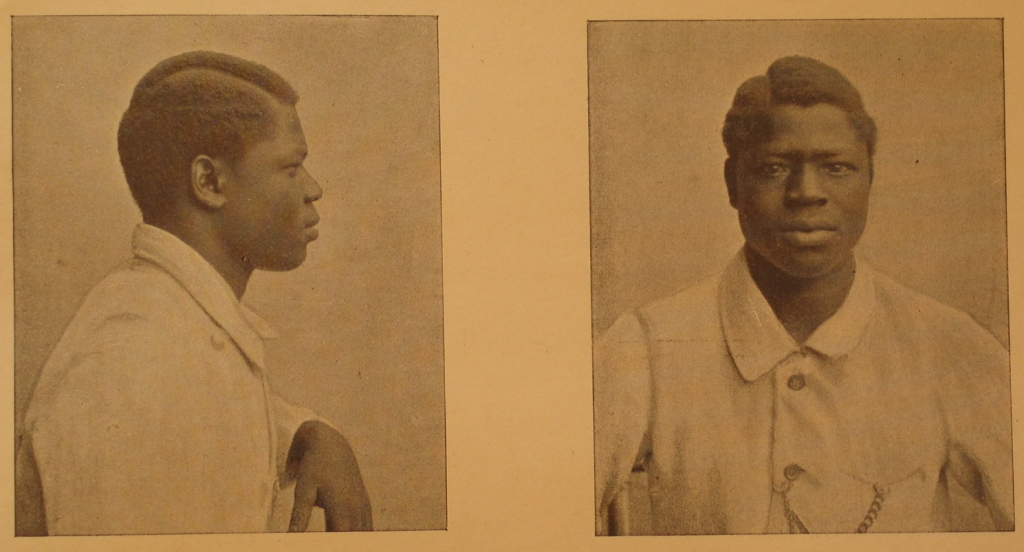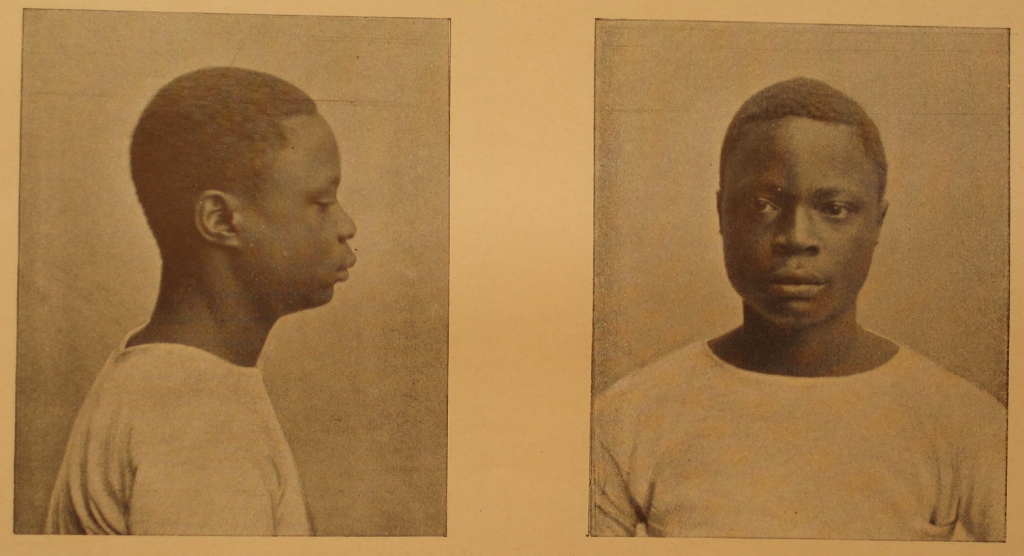At the First German Colonial Exhibition, held in Berlin in 1896, representatives from German overseas territories and beyond were required to perform their culture and customs before crowds of European spectators. The emphasis of the exhibition was on the exotic alterity between ethnic Germans and their colonial subjects, and, as such, it was crucial for the latter to look authentically non-white. This was very much in tune with the popular anthropological view that Germany’s colonial subjects were living examples of natural peoples (Naturvölker), innocent, pure savages, who were diametrically opposed to civilized, white cultured peoples (Kulturvölker).
Many of the performers were willing to play along with this anthropological dichotomy: they wore “authentic” clothes and performed dances and battles before captivated audiences. The Togolese contingent, directed by J.C Bruce, were even able to turn a handsome profit by selling souvenirs to exhibition visitors. This capitalization on the audiences’ exoticist fascination was so successful that when the exhibition came to an end Bruce felt compelled to dispel the popular myth that his cohort had come to Germany merely to line their pockets. In a trite last-minute speech, he claimed that his group gladly accepted the call to travel to Berlin to show its “love for Germany and the German Kaiser” and not because of an alleged obsession with money (Sucht nach Geld).
However, many performers were unwilling to cooperate with the organisers and conform to European racialized stereotypes. The Herero, for example, had seen their participation in the exhibition as a diplomatic opportunity; they demanded an audience with the Kaiser so as to discuss German-Herero relations. As such, they wanted to be taken seriously and refused to change out of their fashionable European-style clothing. Similarly, Petrus Jod of the Nama delegation successfully argued for his group that wearing “heathen” exotic dress would be against his Christian beliefs. In this way, when we look at the clothes worn by performers, we can see that their appearance was often dictated by their own aims, diplomatic or business related, and not those of the organisers.
We can see that performers had some control over their self-presentation, which allowed them to undermine the racial ideals imposed by the exhibition organisers, in the photographs below. They come from Dr Felix von Luschan’s Contributions to the Ethnography of the German Protectorates, which was published as part of the official report on the exhibition. Von Luschan wanted not only to create “a lasting souvenir of the interesting band of blacks,” but also to take photographs for anthropological research purposes. As such, “authenticity” was key, and anything that undermined a strict binary of “cultured” and “natural” people (Kultur-/Naturvölker) was harmful.
Unfortunately for von Luschan, many of the performers saw the photographic exercise as an opportunity to have their personal portrait taken. Consequently, they wanted to showcase what they regarded as their truest selves, which often meant wearing European-style clothing. The Herero and Nama kept to their swish goat leather trousers, but there were many other sartorial defectors. Most notable was Bismarck Bell, who took things further than merely wanting a faithful portrait.
Bell came to the photo shoot sporting a full tuxedo with his lapel adorned with various medals. There is a hint of parody in Bell’s actions, who perhaps saw having his picture taken as an opportunity to “dress up”. His picking and choosing of European sartorial signs with disregard to their corresponding referents arguably constitutes a camp undermining of European culture. It is clearly style that interested Bell over substance: by mixing and matching clothes and accessories he ignored the conventions that govern them. For example, medals were supposed to symbolise acts of bravery for servicemen, but Bell seemed to think they just looked pretty. This mimicry pointed to the arbitrariness of European culture. Afterall, why do medals signify brave acts? Bell’s outfit and its implicit critique showed that the equivalence of “European” with culture (Kultur) was perhaps too readily assumed by von Luschan. The categories of “natural” and “cultural” peoples were revealed to be anything but stable.
Alexander Sy-Quia
Source: Gustav Meinecke, ed., Deutschland und seine Kolonien im Jahre 1896. Amtlicher Bericht über die erste deutsche Kolonial-Ausstellung (Berlin: Dietrich Reimer, 1897), 26 and tables I, V, VI, VII, IX.

Photographs at the Berlin Colonial Exhibition (1896) by Alexander Sy-Quia is licensed under a Creative Commons Attribution-ShareAlike 4.0 International License. Permissions beyond the scope of this license may be available at https://blackcentraleurope.com/who-we-are/.


